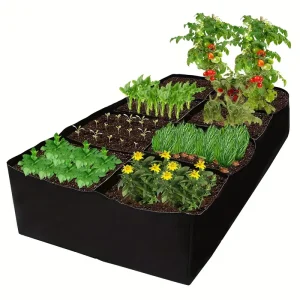 This comprehensive Guide to Vegetable Gardening that will provide beginners with the vital information needed to successfully start and grow a vegetable garden. From selecting the right vegetables to understanding when and where to plant them, this guide covers all the basics to help you create a thriving garden. Whether you are looking to enjoy the delicious flavors of homegrown produce or simply want to try your hand at gardening, this guide will equip you with the knowledge and tools necessary to commence on your vegetable gardening journey. Let's explore the world of gardening and start growing your own fresh and vibrant vegetables!
This comprehensive Guide to Vegetable Gardening that will provide beginners with the vital information needed to successfully start and grow a vegetable garden. From selecting the right vegetables to understanding when and where to plant them, this guide covers all the basics to help you create a thriving garden. Whether you are looking to enjoy the delicious flavors of homegrown produce or simply want to try your hand at gardening, this guide will equip you with the knowledge and tools necessary to commence on your vegetable gardening journey. Let's explore the world of gardening and start growing your own fresh and vibrant vegetables!
Key Takeaways:
- Suitable Location: Choose a sunny spot with well-drained soil for your vegetable garden to thrive.
- Start Small: It's better to have a small garden you can manage than a large one that becomes overwhelming.
- Choose Wisely: Select vegetables that you and your family enjoy eating, and consider the climate of your region for optimal growth.
- Plan Planting: Plant vegetables at the appropriate time based on their growing season and consider companion planting for better results.
- Use Resources: Utilize tools like garden planning software and online guides to help you create and maintain a successful vegetable garden.
Understanding the Basics of Vegetable Gardening –
Simple Guide to Vegetable Gardening
Types of Vegetable Gardens
To understand the basics of Guide to Vegetable Gardening, it is crucial to grasp the different types of vegetable gardens you can create. Consider traditional in-ground gardens, raised beds, container gardens, vertical gardens, and even hydroponic systems. Each type has its benefits and challenges, so choose the one that fits your space, time, and gardening goals.
| In-Ground Gardens | Traditional method of planting directly in the ground. |
| Raised Beds | Elevated garden beds for better drainage and soil control. |
| Container Gardens | Planting in pots or containers for flexibility and mobility. |
| Vertical Gardens | Growing plants vertically on structures or walls to maximize space. |
| Hydroponic Systems | Growing plants in a nutrient-rich water solution without soil. |
Factors to Consider Before Starting – Guide to Vegetable Gardening
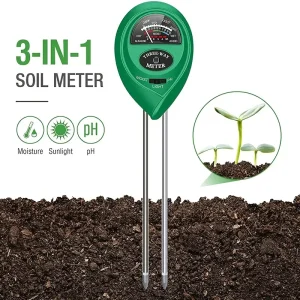 To ensure a successful vegetable garden, there are key factors to consider before starting. Begin by evaluating the available sunlight, water source, soil quality, and space for your garden. Additionally, think about the vegetables you want to grow, considering your preferences and the climate of your region. After planning the layout and gathering necessary tools, make sure to establish a consistent watering and maintenance routine to support healthy plant growth.
To ensure a successful vegetable garden, there are key factors to consider before starting. Begin by evaluating the available sunlight, water source, soil quality, and space for your garden. Additionally, think about the vegetables you want to grow, considering your preferences and the climate of your region. After planning the layout and gathering necessary tools, make sure to establish a consistent watering and maintenance routine to support healthy plant growth.
- Assume that each vegetable has specific requirements for sunlight and water.
- Assume that proper soil preparation is crucial for plant growth.
- After determining the location and size of your garden, choose suitable vegetable varieties.
Planning Your Vegetable Garden
Setting Clear Gardening Goals
Setting clear goals is the first step to a successful vegetable garden. Determine what you want to achieve with your garden, whether it's to grow fresh produce for your family, cultivate a serene outdoor space, or simply enjoy a new hobby. By defining your goals, you can tailor your garden design and plant selection accordingly. Sticking with Guide to Vegetable Gardening.
Choosing the Right Location
Your choice of location can significantly impact the success of your vegetable garden. Select a sunny spot with good drainage to ensure healthy plant growth. Avoid windy areas that could damage your plants or disrupt pollination. Additionally, consider the proximity to water sources and the accessibility of the site for maintenance tasks.
It is important to understand that nutrient-rich soil is imperative for optimal plant growth. Ensure your soil is well-prepared with organic matter to provide the necessary nutrients for your vegetables.
Determining Garden Size and Layout
Determining the size and layout of your garden is crucial for efficient gardening. Start small if you're a beginner to avoid becoming overwhelmed. Consider factors like the number of plants you want to grow, the space available, and the layout that allows easy access for watering, weeding, and harvesting.
This thoughtful planning will help you create a manageable garden that is easy to maintain and yields a bountiful harvest.
Selecting Vegetables Suitable for Beginners
Little by little, beginners can start with easy-to-grow vegetables like lettuce, green beans, and tomatoes. Consider the preferences of your family and the availability of vegetables in your region to make informed choices. By choosing beginner-friendly vegetables, you set yourself up for a successful gardening experience with Guide to Vegetable Gardening
Choosing the right vegetables will not only ensure a fruitful harvest but also provide a rewarding and enjoyable garden experience.
Preparing the Ground for Planting
Testing and Amending Soil
 To ensure a successful vegetable garden, start by testing your soil's pH level and nutrient content. To conduct a soil test, collect samples from different areas of your garden and send them to a local extension service for analysis. Based on the results, you may need to amend the soil with organic matter, such as compost or manure, to improve its fertility and structure.
To ensure a successful vegetable garden, start by testing your soil's pH level and nutrient content. To conduct a soil test, collect samples from different areas of your garden and send them to a local extension service for analysis. Based on the results, you may need to amend the soil with organic matter, such as compost or manure, to improve its fertility and structure.
Tips on Garden Bed Preparation – Guide to Vegetable Gardening
Prior to planting, it's vital to prepare your garden beds properly. Begin by clearing the area of any debris, weeds, or rocks. Loosen the soil with a garden fork or tiller to a depth of at least 6-8 inches to promote root growth and water drainage. After preparing the bed, create defined pathways between the rows to facilitate easy access for maintenance tasks.
- Remove weeds and debris.
- Loosen the soil for better root growth.
- Create pathways for easy access.
Step-by-Step Guide to Soil Enrichment
An enriched soil provides the ideal conditions for your vegetable plants to thrive. Understanding the process of soil enrichment is crucial for a successful garden. Below is a breakdown of the steps involved in enriching your soil:
| Step | Description |
| Analyze | Test soil for pH and nutrient content. |
| Amend | Add compost, manure, or fertilizers as needed. |
| Mix | Incorporate amendments into the soil thoroughly. |
| Level | Smooth the surface of the bed for planting. |
Planting Your Vegetables
Understanding the Planting Calendar
Keep in mind that different vegetables have specific planting times based on weather and temperature preferences. Some thrive in cooler spring weather, while others require warm summer conditions. Consulting a planting calendar tailored to your local frost dates can help you ensure that you plant at the optimal times for success. Plus following Guide to Vegetable Gardening.
Tips for Sowing Seeds
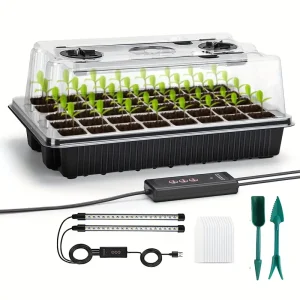 Some important tips for sowing seeds include planting them at the correct depth, providing adequate water, and keeping an eye on germination rates. It's also crucial to follow spacing recommendations to avoid overcrowding and provide sufficient room for growth. This ensures that your seeds have the best chance of sprouting and developing into healthy plants.
Some important tips for sowing seeds include planting them at the correct depth, providing adequate water, and keeping an eye on germination rates. It's also crucial to follow spacing recommendations to avoid overcrowding and provide sufficient room for growth. This ensures that your seeds have the best chance of sprouting and developing into healthy plants.
- Choose high-quality seeds from reputable sources
- Label your seedlings to keep track of different varieties
- Monitor soil moisture levels regularly to promote germination
Techniques for Transplanting Seedlings
Assuming you have started your seeds indoors, transplanting seedlings into your garden requires care and attention. Before transplanting, harden off the seedlings by gradually exposing them to outdoor conditions to prevent shock. When planting, handle the delicate seedlings gently, ensuring they are placed at the correct depth to establish strong root systems.
- Transplant seedlings on a cloudy day to minimize stress
- Water newly transplanted seedlings gently to help them settle in
- Protect young plants from pests and extreme weather conditions
Sowing seeds and transplanting seedlings are crucial steps in establishing a successful vegetable garden. By following these tips and techniques, you can ensure that your plants have a healthy start and thrive throughout the growing season.
Guide to Vegetable Gardening- Caring for Your Vegetable Garden
Essential Tips for Watering Your Plants
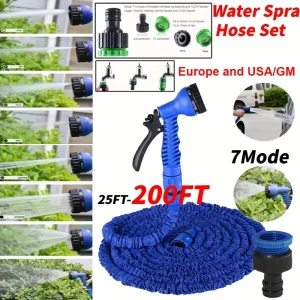 Many beginners overlook the importance of proper watering in maintaining a healthy vegetable garden. It is crucial to water your plants deeply and consistently, ensuring that the roots receive adequate moisture. A general rule of thumb is to provide about 1 inch of water per week, either through rainfall or irrigation. Avoid shallow, frequent watering, as this can lead to weak root systems. Overwatering can be just as harmful as underwatering, so monitor the soil moisture levels regularly to find the right balance for your garden.
Many beginners overlook the importance of proper watering in maintaining a healthy vegetable garden. It is crucial to water your plants deeply and consistently, ensuring that the roots receive adequate moisture. A general rule of thumb is to provide about 1 inch of water per week, either through rainfall or irrigation. Avoid shallow, frequent watering, as this can lead to weak root systems. Overwatering can be just as harmful as underwatering, so monitor the soil moisture levels regularly to find the right balance for your garden.
The Role of Mulching in Weed Control and Moisture Retention
Caring for your vegetable garden includes implementing mulching as a crucial technique for weed control and moisture retention. Mulch helps suppress weed growth by blocking sunlight and preventing weed seeds from germinating. Additionally, mulch acts as a protective layer that retains soil moisture, reducing the frequency of watering needed for your plants. Organic mulches also break down over time, adding crucial nutrients to the soil for improved plant growth. Consider using materials such as straw, leaves, or grass clippings as mulch in your garden.
Fertilization: Natural vs. Synthetic Options
Many gardeners are faced with the decision between using natural or synthetic fertilizers for their vegetable gardens. Some opt for organic options such as compost, manure, or other natural amendments to provide nutrients to their plants. These natural fertilizers promote soil health and microbial activity, leading to sustainable plant growth. On the other hand, synthetic fertilizers offer a quick nutrient boost to plants but may have harmful effects on soil health and microbial balance. It's crucial to weigh the pros and cons of each fertilization method to choose what's best for your garden's long-term health.
Pest and Disease Management Strategies

Tips on effectively managing pests and diseases in your vegetable garden can help maintain plant health and productivity. Gardeners can implement various strategies such as crop rotation, companion planting, and using natural predators to control pest populations. Additionally, practicing good garden hygiene by removing diseased plant material and monitoring for early signs of pest infestations can help prevent widespread damage. Mulching around plants can also deter certain pests and provide a barrier against soil-borne diseases. Stepping up on Guide to Vegetable Gardening, It's crucial to stay vigilant and address pest and disease issues promptly to protect your vegetable garden from potential harm.
Garden Maintenance and Troubleshooting
Regular Tasks for Garden Upkeep
For successful vegetable gardening, regular tasks for garden upkeep are important. This includes watering, weeding, mulching, and monitoring for pests and diseases. By staying on top of these tasks, you can ensure the health and productivity of your plants throughout the growing season.
Identifying Common Problems and Solutions
For beginners, it's important to be able to identify common problems in your vegetable garden and know how to address them effectively. Issues such as nutrient deficiencies, pests, and diseases can impact your plants' growth and yield. Learning to recognize the signs of these problems early on can help you take proactive steps to mitigate them.
Upkeep
For a Step-by-Step Guide to Pruning and Training Plants, it is important to understand the proper techniques to maintain the health and shape of your plants. Regular pruning helps promote airflow and sunlight penetration, reducing the risk of disease. Training plants, such as tomatoes on a trellis or beans on a support system, can improve yield and make harvesting easier.
| Regular Tasks | Frequency |
| Weeding | Weekly |
| Watering | As needed, daily in hot weather |
| Mulching | Once plants are established |
Plants
For a Step-by-Step Guide to Pruning and Training Plants, consider the specific needs of each plant variety. Some plants, like cucumbers and squash, benefit from being trained to grow vertically to save space and improve air circulation. Pruning techniques vary depending on the plant type, with some plants requiring regular pruning to maintain shape and promote fruiting.
| Pruning | Training |
| Remove dead or diseased branches | Train vines to grow up trellises |
| Encourage branching for bushier plants | Support heavy fruit with stakes or cages |
Harvesting Your Vegetables
Knowing When and How to Harvest
After patiently tending to your vegetable garden, the time will come to reap the rewards of your hard work. You must know when each vegetable is ready to be harvested to ensure optimal taste and texture. Different vegetables have specific signs to look for, such as color, size, or firmness. For example, tomatoes should be fully colored and slightly soft to the touch, while leafy greens like lettuce should be harvested when the leaves are young and tender.
Tips for Prolonging the Harvest Period – Guide to Vegetable Gardening
You can extend the harvest period of your vegetables by employing some simple strategies. To prolong the productivity of your garden, consider staggered planting with short intervals between plantings. Additionally, regular pruning and deadheading of plants can encourage continuous production. Rotate your crops yearly to prevent soil depletion and disease buildup. Thinning out overcrowded plants will also help each individual plant thrive and produce more abundant harvests. Bear in mind, proper care and maintenance throughout the growing season are key to a bountiful harvest.
- Thou shalt practice crop rotation annually for healthy soil.
- Thou shalt thin out overcrowded plants for optimal growth.
Methods for Post-Harvest Handling and Storage
Harvesting your vegetables is just the beginning; proper post-harvest handling and storage are important to preserve the quality of your produce. Post-harvest handling involves cleaning, sorting, and storing vegetables correctly to minimize spoilage and maximize freshness. Different vegetables require varying storage conditions, such as cool, dark spaces for root vegetables and refrigeration for leafy greens. By following best practices for post-harvest care, you can enjoy your homegrown vegetables for weeks to come.
PostHarvest: After harvesting your vegetables, ensure you clean and store them properly to maintain freshness and flavor.
Extending Your Growing Season
Techniques for Early Start and Late Harvest
For beginners looking to extend their growing season, implementing techniques for early start and late harvest can be beneficial. By utilizing methods such as starting seeds indoors, using row covers, or planting cold-tolerant crops, you can begin your garden earlier in the spring and continue harvesting well into the fall. These techniques help maximize your garden's productivity and enjoyment throughout the year.
Using Greenhouses and Cold Frames
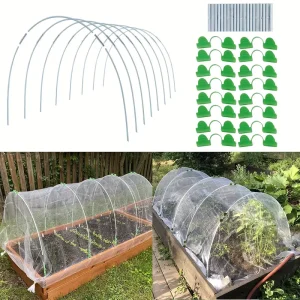 Little infrastructure, such as greenhouses and cold frames, can provide a controlled environment for your plants, allowing you to extend the growing season even further. Greenhouses create a warm, protected space for your plants, while cold frames offer a more affordable and simple alternative for season extension. Both options can help you grow crops that would typically struggle in your climate, allowing for a wider variety of vegetables and fruits to be cultivated.
Little infrastructure, such as greenhouses and cold frames, can provide a controlled environment for your plants, allowing you to extend the growing season even further. Greenhouses create a warm, protected space for your plants, while cold frames offer a more affordable and simple alternative for season extension. Both options can help you grow crops that would typically struggle in your climate, allowing for a wider variety of vegetables and fruits to be cultivated.
Succession Planting and Crop Rotation
Your garden's productivity can be enhanced by incorporating succession planting and crop rotation strategies. By planting new crops as soon as one is harvested and rotating plant families to different areas of the garden each year, you can prevent soil depletion and pest build-up. These practices help maintain soil health, optimize growing conditions, and increase overall yield in your garden.
Advancing Your Gardening Skills – Guide to Vegetable Gardening
Experimenting with New Vegetable Varieties
Despite being a beginner, it's important to challenge yourself and try new vegetable varieties in your garden. Little by little, introducing different types of vegetables can expand your gardening knowledge and skills. Start by researching unique varieties that thrive in your region and have different growing requirements. Experimenting with new vegetables can add excitement to your gardening experience and broaden your understanding of plant diversity.
Introducing Companion Planting
Gardening enthusiasts often overlook the benefits of companion planting, a practice that involves growing complementary plants together to promote growth and deter pests. Companion planting can create a harmonious environment in your garden, enhancing plant health and productivity. By strategically pairing compatible plants, you can improve soil quality, attract beneficial insects, and reduce the need for chemical pesticides.
Companion planting is a tried and tested gardening technique that has been utilized for centuries to maximize crop yields and maintain overall garden health. By cultivating a diverse range of plants that support each other's growth, you can create a balanced ecosystem within your garden and foster sustainable gardening practices.
Incorporating Organic and Sustainable Practices
Sustainable gardening practices not only benefit the environment but also contribute to the overall health and vitality of your garden. By incorporating organic methods such as composting, mulching, and natural pest control, you can reduce your environmental impact and promote long-term soil fertility. Sustainable gardening is not only ethical but also ensures the longevity and success of your garden for years to come.
Skills in implementing organic and sustainable practices are crucial for aspiring gardeners looking to create a thriving vegetable garden. By adopting eco-friendly techniques and prioritizing environmental stewardship, you can cultivate a garden that is not only productive but also environmentally conscious.
Summing up – Guide to Vegetable Gardening
Presently, you have been equipped with a simple yet comprehensive guide to vegetable gardening for beginners, covering the basics of planting and growing a successful garden. By emphasizing the importance of selecting the right site, choosing the appropriate plot size, and picking easy-to-grow vegetables, this guide has provided important tips for aspiring gardeners. From understanding when to plant different vegetables to creating a successful garden plan, the insights shared here aim to empower individuals to initiate on a rewarding journey of growing their own fresh produce. With the right knowledge and preparation, anyone can enjoy the sweet, juicy flavors and vibrant textures of garden-fresh fruits and vegetables straight from their backyard. So, let this guide be your stepping stone towards a thriving vegetable garden this year!
FAQ – Guide to Vegetable Gardening
Q: What is the importance of gardening for beginners?
A: Gardening for beginners provides an opportunity to enjoy fresh, flavorful vegetables while engaging in a rewarding hobby.
Q: How can beginners start a vegetable garden from scratch?
A: Beginners can start a vegetable garden by selecting a sunny spot with well-drained soil, choosing the right vegetables to grow, and preparing the soil for planting.
Q: What are some easy-to-grow vegetables recommended for beginners?
A: Recommended easy-to-grow vegetables for beginners include lettuce, green beans, radishes, tomatoes, zucchini, peppers, beets, carrots, chard, spinach, kale, and peas.
Q: How should beginners plan the layout and size of their vegetable garden?
A: Beginners should start with a small garden size, such as a 10′ x 10′ plot in the ground or a 4′ x 4′ raised bed, to manage the planting effectively. It is important to consider spacing, paths, and the types of vegetables to be grown.
Q: When and where should beginners plant their vegetables?
A: Following Guide to Vegetable Gardening, Beginners should plant vegetables based on their specific growing season and temperature preferences. Cool-season vegetables like lettuce should be planted early in spring, while warm-season vegetables like tomatoes are best planted in late spring and summer. Consider the location of tall plants to prevent shading of shorter plants and stagger planting for continuous harvest.
Serving All USA States and Territories
Alabama (AL), Alaska (AK), Arizona (AZ), Arkansas (AR), California (CA), Colorado (CO), Connecticut (CT), Delaware (DE), Florida (FL), Georgia (GA), Hawaii (HI), Idaho (ID), Illinois (IL), Indiana (IN), Iowa (IA), Kansas (KS), Kentucky (KY), Louisiana (LA), Maine (ME), Maryland (MD), Massachusetts (MA), Michigan (MI), Minnesota (MN), Mississippi (MS), Missouri (MO), Montana (MT), Nebraska (NE), Nevada (NV), New Hampshire (NH), New Jersey (NJ), New Mexico (NM), New York (NY), North Carolina (NC), North Dakota (ND), Ohio (OH), Oklahoma (OK), Oregon (OR), Pennsylvania (PA), Rhode Island (RI), South Carolina (SC), South Dakota (SD), Tennessee (TN), Texas (TX), Utah (UT), Vermont (VT), Virginia (VA), Washington (WA), West Virginia (WV), Wisconsin (WI), Wyoming (WY).
U.S. territories:
American Samoa (AS), District of Columbia (DC), Guam (GU), Northern Mariana Islands (MP), Puerto Rico (PR), Virgin Islands (VI), Trust Territories (TT).
In all Major USA Cities
New York City, Los Angeles, Chicago, Houston, Phoenix, Philadelphia, San Antonio, San Diego, Dallas, Jacksonville, Fort Worth, Columbus, San Francisco, Charlotte, Seattle, Denver, Washington, Washington DC, Boston, El Paso, Detroit, Portland, Memphis, Oklahoma City, Las Vegas, Baltimore, Milwaukee, Albuquerque, Tucson, Fresno, Mesa, Sacramento, Atlanta, Kansas City, Colorado Springs, Miami, Raleigh, Omaha, Long Beach, Virginia Beach, Oakland, Minneapolis, Tulsa, Arlington, Tampa, New Orleans, Wichita, Cleveland, Bakersfield, Aurora, Anaheim, Urban Honolulu, Santa Ana, Riverside, Corpus Christi, Stockton, Henderson, St. Paul, St. Louis, Cincinnati, Pittsburgh, Greensboro, Anchorage, Plano, Lincoln, Orlando, Irvine, Newark, Toledo, Durham, Chula Vista, Fort Wayne, Jersey City, St. Petersburg, Laredo, Madison, Chandler, Buffalo, Lubbock, Scottsdale, Reno, Glendale, Gilbert, North Las Vegas, Norfolk, Chesapeake, Garland, Irving, Hialeah, Fremont, Boise City, Richmond, Baton Rouge, Spokane, Des Moines, Tacoma, San Bernardino, Modesto, Fontana, Moreno Valley, Huntington Beach.